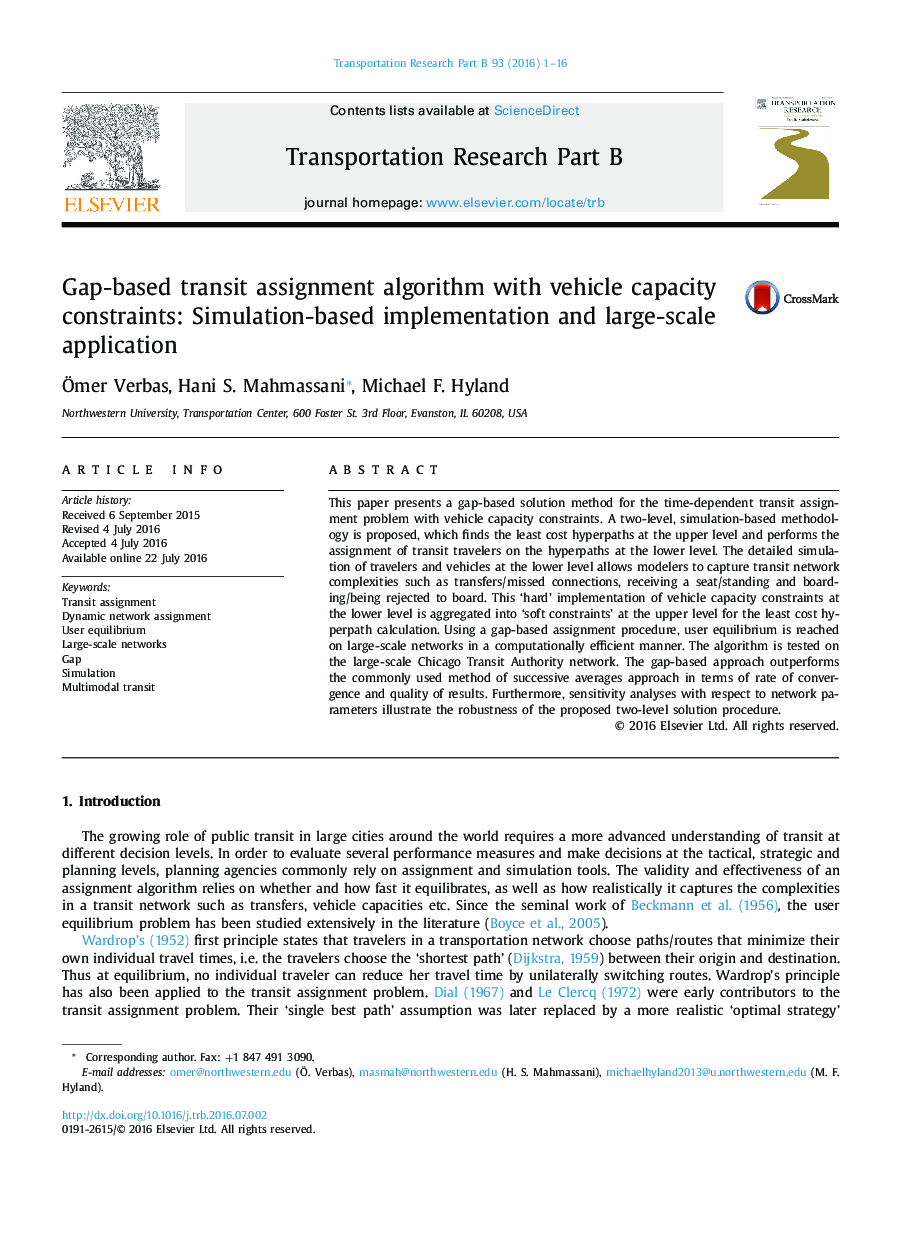| Article ID | Journal | Published Year | Pages | File Type |
|---|---|---|---|---|
| 5127172 | Transportation Research Part B: Methodological | 2016 | 16 Pages |
â¢Multi-modal, time-dependent transit assignment-simulation platform.â¢Captures complexities via multi-agent particle simulation of travelers and vehicles.â¢Vehicle capacity constraints are implemented as hard and soft constraints.â¢Gap-based formulation outperforms the method of successive averages.â¢Integrates with activity-based travel behavior modeling framework.
This paper presents a gap-based solution method for the time-dependent transit assignment problem with vehicle capacity constraints. A two-level, simulation-based methodology is proposed, which finds the least cost hyperpaths at the upper level and performs the assignment of transit travelers on the hyperpaths at the lower level. The detailed simulation of travelers and vehicles at the lower level allows modelers to capture transit network complexities such as transfers/missed connections, receiving a seat/standing and boarding/being rejected to board. This 'hard' implementation of vehicle capacity constraints at the lower level is aggregated into 'soft constraints' at the upper level for the least cost hyperpath calculation. Using a gap-based assignment procedure, user equilibrium is reached on large-scale networks in a computationally efficient manner. The algorithm is tested on the large-scale Chicago Transit Authority network. The gap-based approach outperforms the commonly used method of successive averages approach in terms of rate of convergence and quality of results. Furthermore, sensitivity analyses with respect to network parameters illustrate the robustness of the proposed two-level solution procedure.
